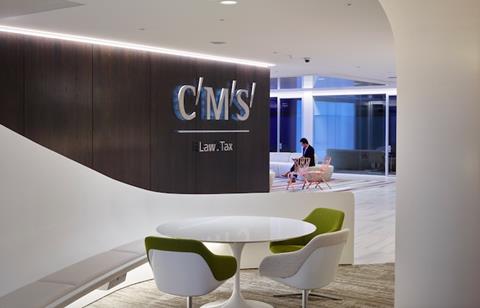
Law firm CMS has reported a 17.3% mean gender pay gap for fixed hourly pay as at 5 April 2017.
The organisation has reported its gender pay gap data in line with the government’s gender pay gap reporting regulations and ahead of the private sector submission deadline of 4 April 2018.
The gender pay gap reporting regulations require organisations with 250 or more employees to publish the difference between both the mean and median hourly rate of pay for male and female full-time employees; the difference between both the mean bonus pay and median bonus pay for male and female employees; the proportions of male and female employees who were awarded bonus pay; and the proportions of male and female full-time employees in the lower, lower middle, upper middle and upper quartile pay bands.
The median gender pay gap for fixed hourly pay is 32.8% as at 5 April 2017.
The mean gender pay gap for bonuses paid in the year to 5 April 2017 is 26.9%, and the median gender pay gap for bonus pay is 30.4%. Over this period, 90% of both female and male employees received a bonus payment.
Just over half (60%) of employees in the highest pay quartile at CMS are women, compared to 63% in the second quartile, 74% in the third quartile, and 83% in the lowest pay quartile. The majority (70%) of CMS’ workforce are women, and 78% of female employees work on a full-time basis, compared to 22% of women who work part-time. On other hand, 98% of male employees work on a full-time basis compared to 2% who work part-time.
CMS has voluntarily completed additional analysis to further break down its gender pay gap data by location and job type. In London, female lawyers and associates earn more than men with mean gender pay gaps of 1.4% and 1% respectively. In both Bristol and Scotland, male lawyers, associates and senior associates earn more than their female counterparts, according to mean gender pay gap results.
Analysis of its pay grades for business services and legal support roles also shows that for pay grade two, in London and Scotland, women earn more with mean gender pay gaps of 3.68% and 2.83% respectively. This compares to pay grade seven where men are the higher earners in London, with a mean gender pay gap of 6.94%. The highest mean gender pay gap is in pay grade six for Scotland-based employees, where men earn more. The mean gender pay gap in this category is 15.82%.
CMS has attributed its gender pay gap to the disproportionate ratio of men to women in the firm, particularly in the business support teams. The organisation also believes that its high number of part-time female employees has influenced its gender pay gap figures.
To address its gender pay gap, CMS is implementing an inclusion strategy to enhance the organisational culture. The strategy will be focused around the pillars of gender diversity, equality of opportunity and talent development. Initiatives included in the strategy include work allocation monitoring and recruitment drives to broaden the size of CMS’ potential talent pool. In addition, the law firm will continue to monitor its maternity and parental leave benefits, which offers mothers, fathers, partners and adoptive parents enhanced pay, flexibility, and the ability to take extended leave. The firm also provides coaching support before and after any periods of leave.
Within its report, CMS wrote: “At CMS, we are deeply committed to respect and all aspects of diversity and inclusion. We are therefore keen to publish early our gender pay statistics required under section 78 of the Equality Act 2010. Not only have we reported the statistics that are required under law, we have also provided a breakdown of those statistics providing further detail and conclusions. In addition, while the data relates only to UK employees, the spirit of equality is one we are driving through our whole business, for partners as well as employees, and internationally as well as in the UK. [While] our figures may well be in line with those of other international law firms, we are not complacent and accept that there is still work to be done.
“Our commitment is to work hard to improve these statistics. With that in mind, we are implementing an inclusion strategy that has embedded a number of initiatives within our firm that work together in a concerted effort to enhance the culture of our workplace. The strategy is robust and sustainable to deliver inclusion across all the different pillars of the firm, including gender diversity and equality of opportunity, and invests in the talent development and future of our firm.”











